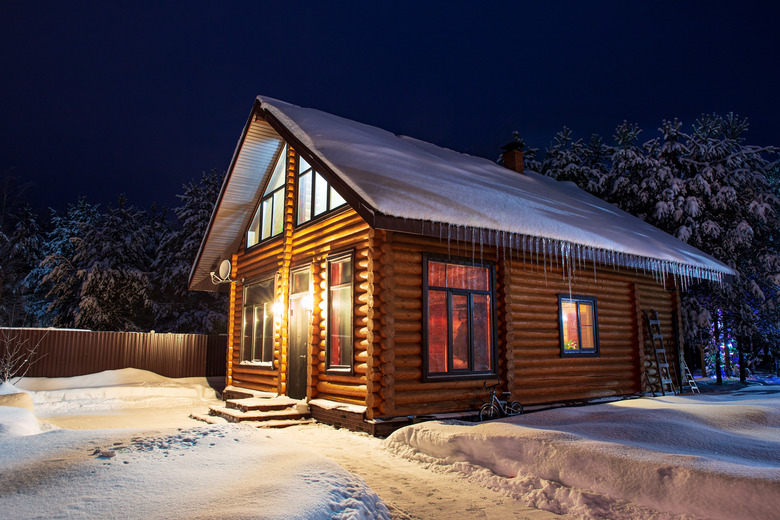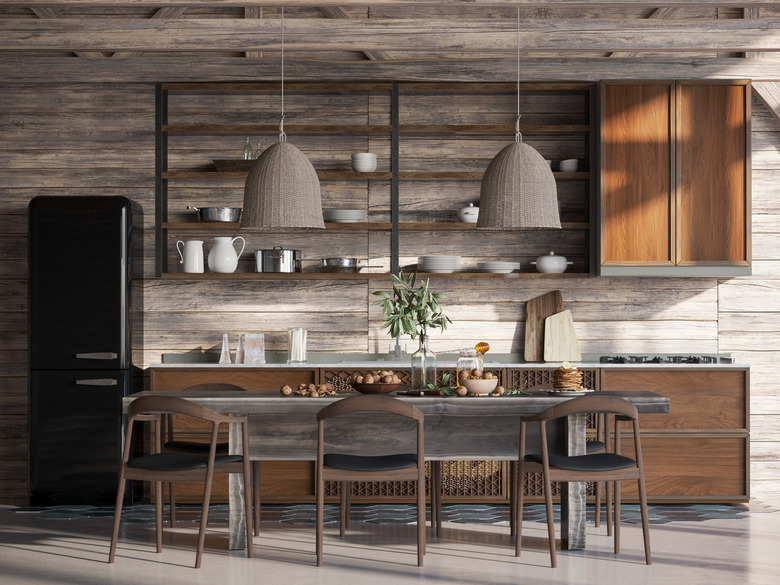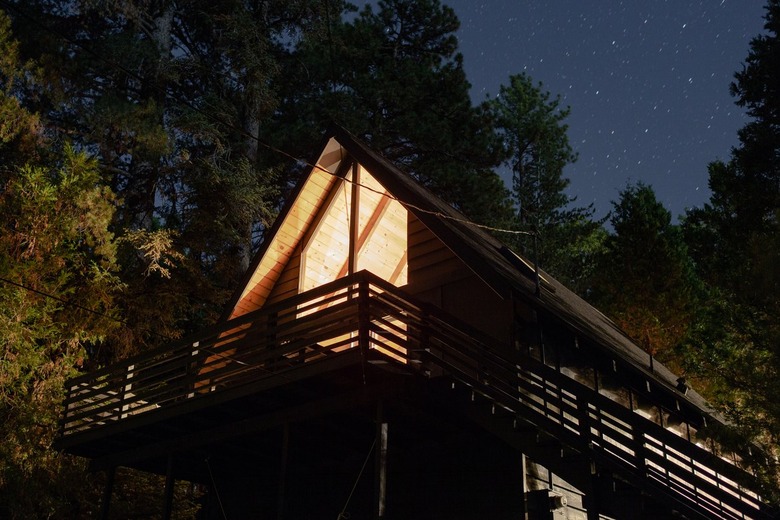The Pros And Cons Of Log Homes
Log homes can be absolutely breathtaking to behold and offer a warm, cozy living environment full of charm. They are not without their problems, however, and you should carefully consider both the pros and cons of a log home before building or purchasing one. Don't let the charm and beauty of a wood home lure you into a lifestyle you're not prepared for. Log home living is a treat for some but a barrage of unpleasant surprises for those unprepared for their quirks and maintenance needs.
Pros of Log Homes
Pros of Log Homes
A Green Option
Log homes are considered a green building option because trees are a renewable resource. It is even possible to build a log home using standing dead timber harvested from trees killed by insects, and some builders purchase materials only from forests that are certified for sustainable management.
Tip
Log homes fit well into rural and mountain environments and blend with the natural scenery rather than standing out.
Durability
Trees are part of Mother Nature and as such are built to withstand storms, hurricanes, high winds, large amounts of snowfall, and other potentially dangerous natural events. According to the National Association of Home Builders' Log and Timber Homes Council, Europe's log homes are routinely dated at over 800 years old, and some log structures in Russia have stood for more than 1,000 years.
Energy Efficiency
When properly constructed and sealed, log homes tend to exceed building code standards for thermal performance, so they use less energy. Log homes that are properly designed and built can be made 15 percent to 20 percent more efficient than homes made of more modern construction materials. Log homes also tend to be quieter than other homes, since the same log properties that contribute to energy efficiency also possess sound-deadening properties.
Beauty and Craftsmanship
Log homes create warmth and are often full of small details overlooked in stick-frame construction. Log home builders are craftspeople, and their work is highly visible throughout the home in stairs, ceilings, banisters, and other features. Log homes are often built as someone's dream home, and as such no detail is overlooked. Log homes are perfect for those who dislike cookie-cutter developments where each house looks the same.
Cons of Log Homes
Cons of Log Homes
Pests and Critters
There are many insects that feed on, live in, or otherwise make use of wood, including carpenter ants, carpenter bees, and termites. You'll need to be aware of these pests and others, such as woodpeckers, and look for signs of them frequently so you can stop small problems before they become large ones. Thanks to borate and other treatments, insect problems in log homes are not as bad as they once were, but issues still arise. Small creatures, too, such as field mice, may find their way into a log home more easily than they would a home constructed of other materials.
Maintenance Concerns
All homes require some exterior care and maintenance, but log homes require a bit more than most. Once a year, the home's exterior should be washed to remove pollen, insect debris, and dirt. At that time, the home should be checked for mildew and mold, which should be removed if present. Any faulty caulking and chinking should be removed and replaced during this inspection, and the wood should be restained or resealed if needed. It is not unusual for a log home to need to be resealed every three to four years.
Limited Inventory
Log homes don't always conform to local zoning ordinances and aren't always a good fit for the look and feel of some neighborhoods. As a result, you won't find them everywhere, and the log homes you do find will tend to be built in more rural areas. This makes the available inventory somewhat limited when it's time to go house hunting. You may have to consider building if you truly have your heart set on a log home and nothing else will do. If you do find a home to buy, make sure the setting will work for you, taking into account all of the lifestyle changes living in a more rural area creates.
Insurance Costs
Log homes often cost more to insure than conventional homes. One reason is because log homes are often located in remote locations, far from fire departments that could respond more quickly to the fire if the home were closer. Log homes are also expensive to rebuild if they are lost to a fire or other disaster, causing some insurance companies to raise their rates or shy away from log homes altogether. To reduce the insurance rate, shop around with several insurers, opt for a fire-resistant roof (rather than wood shingles) when building, and avoid cabins with freestanding wood stoves, or replace them with a safer heating choice.


